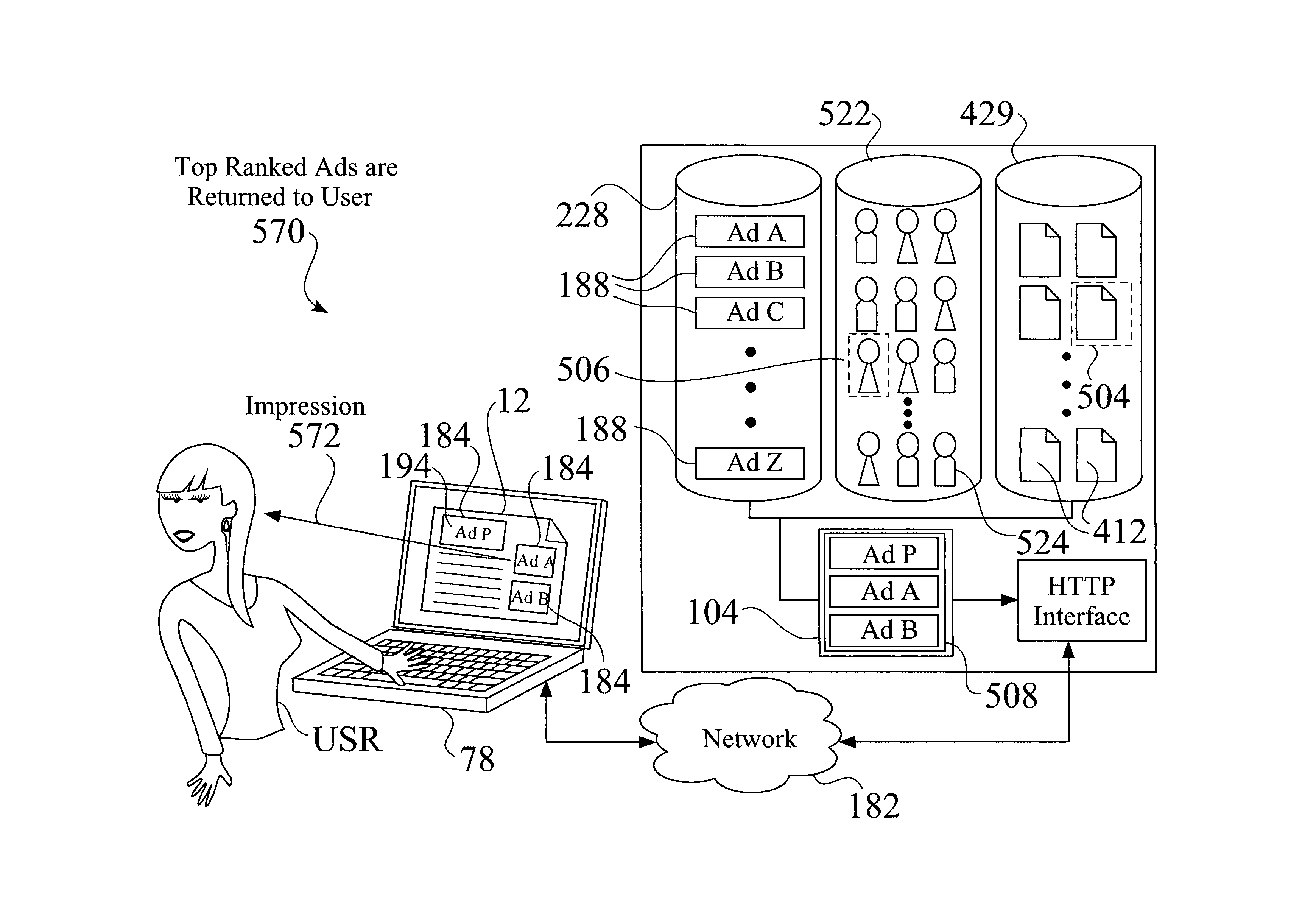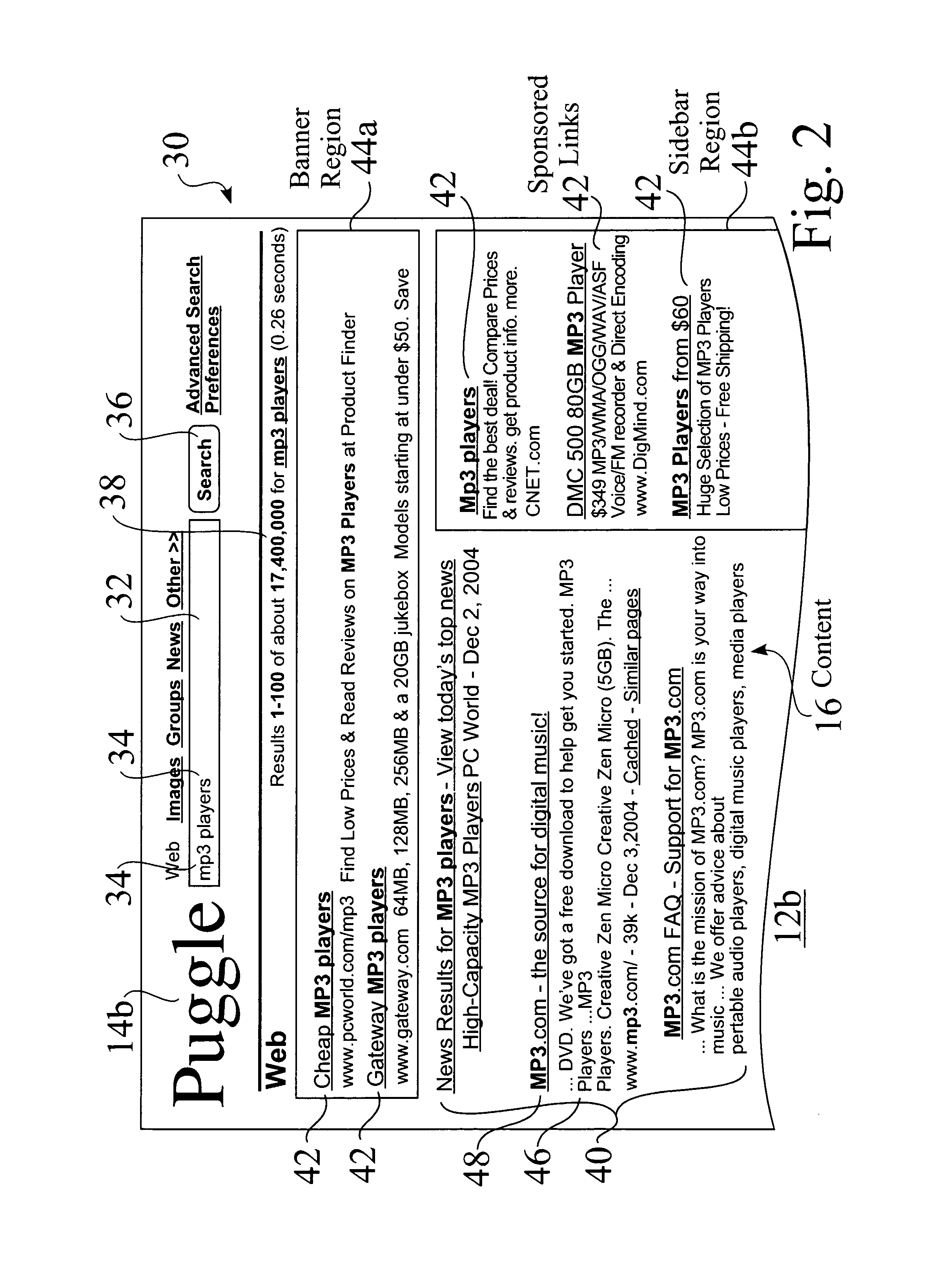While various forms of
online advertising have been used for several years, most types of conventional online advertising offer only limited relevance to consumers.
Current online technology suffers from several significant limitations, including:the use of cost-per-impression and cost-per-click pricing of the ads;the complexity of keyword bidding;the use of click rate for judging ad relevance; andthe number and type of features employed for judging relevance.
CPM-priced ads are rarely priced accurately to reflect their true value to advertisers, publishers, and consumers.
For example, publishers' sales teams are motivated primarily by commissions that arise from closing deals and reducing sales costs, and thus ad inventory gets sold in large bundles that don't distinguish the relevance and value of individual ads.
As well, advertisers are required to monitor the effectiveness of CPM ads, such as by tracking rates of clicks and conversions of clicks to purchases and / or actions, and most advertisers find it difficult to monitor performance effectively.
But in practice, most advertisers still don't do such full tracking, and thus they rely on click rates as approximations for the relevance of an ad.
CPC pricing still suffers a serious problem; clicks originating from different Web sites in an ad network have different values to a publisher, but the publisher must pay a single, uniform CPC price, regardless of where the ad is displayed.
However, the advertiser must pay the same price for those clicks, and thus may be underpaying for the clicks at AOL.com and / or overpaying for the clicks at Google.com.
Such systems are therefore economically inefficient, and greatly affect the relevance of the ads actually shown to consumers.
However, such an approach makes the bidding even more complicated than it already is, and depresses bid prices, by subdividing the bidding market, allowing advertisers to pick and choose which sites run their ads, with far fewer advertisers bidding for a given keyword in any one submarket.
Similarly, uniform CPC pricing is not a good fit with behavioral targeting of ads.
But, as discussed above, that greatly complicates an already complicated bidding process, and depresses bid prices.
As well, CPC pricing is very susceptible to “
click fraud”.
Using simple
off the shelf software, an unscrupulous business can easily generate large volumes of fake clicks on its competitor's ads, forcing the competitor to pay for clicks that aren't generating any real business.
More seriously, an unscrupulous publisher can run CPC ads from an ad network and create fake clicks in an attempt to get more revenue from the ad network (which shares its revenue with its publishers).
Click fraud is widely recognized as a serious problem, and ad networks like Google and Yahoo invest large amounts to attempt to detect and prevent such fraud.
Both tasks are quite difficult for the average advertiser.
It's quite difficult for the typical advertiser to think of all the different phrases that should trigger the display of an ad.
In practice, most advertisers find it very difficult to pick thousands of keyword phrases, track conversion rates on them, and adjust the maximum CPCs accordingly.
While this has worked well when the ads were shown mostly on a few search engines, it doesn't work nearly as well when the ads are shown on thousands of Web sites, and it doesn't work well with behavioral targeting.
While the use of test impressions may work adequately on a single
search engine, such systems quickly become cumbersome when applied to a network of thousands of publishers, or when applied to behavioral targeting.
However, in practice, getting a separate measurement of click rate for each combination isn't practical.
Not only would it take too long to run those test impressions, e.g. perhaps weeks, but it would also cost too much, since such a
system would be sacrificing significant revenue by running too many ads that generate too few clicks.
And on smaller Web sites with fewer visitors, there simply aren't enough impressions available.
Thus, when estimating ECPM to select ads, conventional ad networks are limited to using the average click rate of ads over the entire network or large subsets of the network, rather than for each combination of page and user segment.
Since actual click rates can vary greatly across combinations, the use of average click rate yields an inferior selection of ads for any given page and user.
As a consequence of their reliance on average click rates, conventional ad networks will find it difficult to introduce behavioral targeting.
Such conventional ad networks also find it difficult to accommodate advertisers with very large numbers of ads, since each ad consumes test impressions in order to measure their click rates.
Current advertising technologies are quite limited in how they match ads with Web pages and users.
While the disclosed prior art systems and methodologies provide placement of ads within web sites based on a variety of pricing methods, the ads often have limited relevance to customers, and require significant effort and expertise from advertisers, thereby minimizing the value of the ads to advertisers, publishers, customers and the ad network.
 Login to View More
Login to View More  Login to View More
Login to View More 


